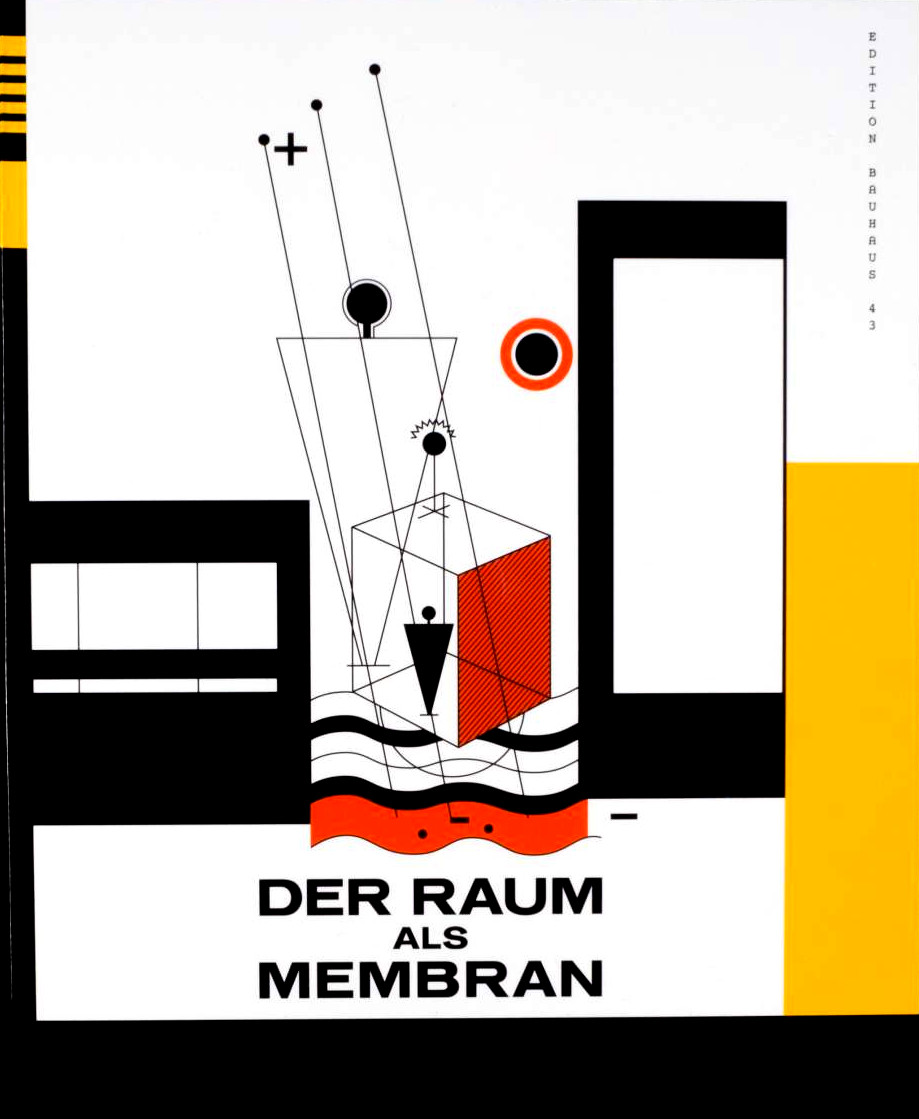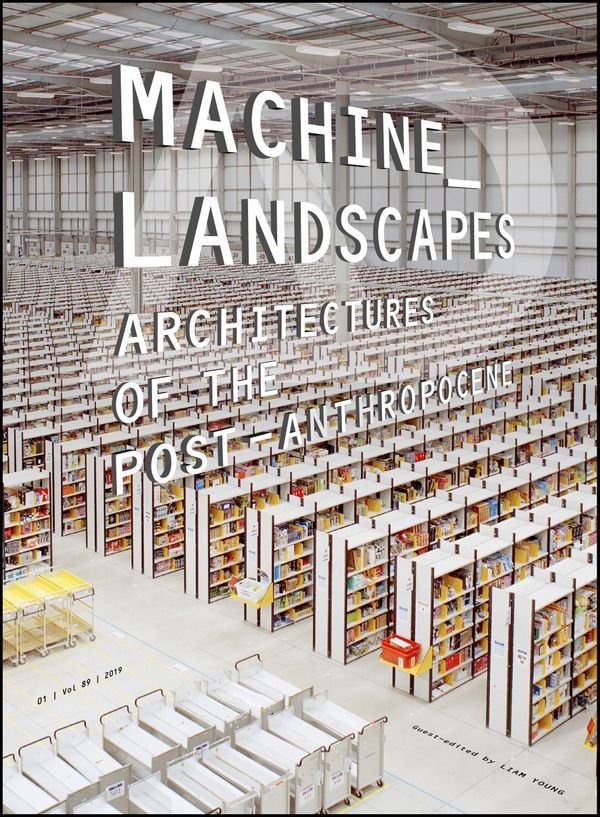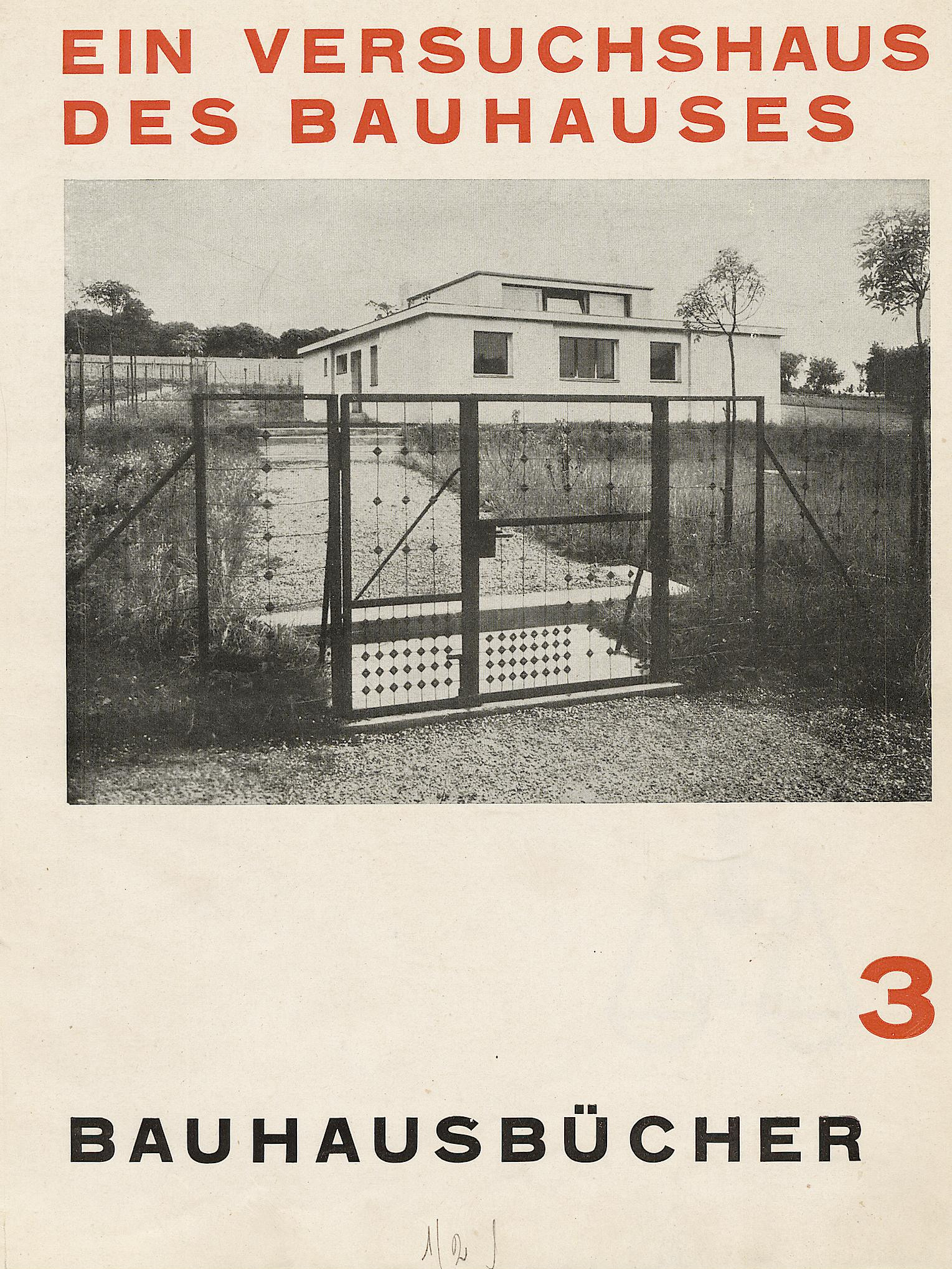Siegfried Ebeling: Der Raum als Membran (1926–) [German]
Filed under book | Tags: · architecture, bauhaus, biology, body

“Time and again Der Raum als Membran [Space as Membrane], published by Siegfried Ebeling as a kind of pamphlet in 1926 in Dessau — the artistic and technological laboratory of modernism—, caught the attention of his contemporaries. We find a copy on the desk of Walter Gropius at the Dessau Bauhaus, another one with notes from the hand of the architect at the library of Mies van der Rohe. And again and again whenever the utopian Bauhaus is mentioned, the title page of Der Raum als Membran reappears. The author, however, along with his other attempts to develop a theory of biological architecture, has disappeared from common memory. Siegfried Ebeling died 1963 in Hamburg, impoverished and isolated from post-war architecture.”
Full title: Der Raum als Membran: ist ein analytisch-kritischer Beitrag zu Fragen zukünftiger Architektur, die über das nackte Bedürfnis hinausgeht und hiermit sich legen möchte in die gestaltende Hand aller Wissenschaft.
First published by C. Dünnhaupt, Dessau, 1926.
New edition
Afterword by Walter Scheiffele
Publisher Spector Books, Leipzig, 2016
Edition Bauhaus, 43
ISBN 9783944669465, 3944669460
47 pages
via Thebaus
Commentary: Walter Scheiffele (2010), Volker Frank (n.d., DE), Luis Palcorbo & Ines Martin-Robles (RA, 2014, ES), James Lowder (2015), Matina Kousidi (Architectural Review, 2015), Matina Kousidi (MD Journal, 2016), Georg Vrachliotis (Arch+, 2016, DE).
PDF (Afterword missing, 5 MB)
Comment (0)Architectural Design, 89(1): Machine Landscapes: Architectures of the Post‐Anthropocene (2019)
Filed under magazine | Tags: · anthropocene, architecture, data center, design, infrastructure, machine, media infrastructure

“This issue of Architectural Design (AD) discusses how the most significant architectural spaces in the world are now entirely empty of people. The data centers, telecommunications networks, distribution warehouses, unmanned ports, and industrialized agriculture that define the very nature of who we are today are at the same time places we can never visit. Instead, they are occupied by server stacks and hard drives, logistics bots and mobile shelving units, autonomous cranes and container ships, robot vacuum cleaners and internet-connected toasters, driverless tractors and taxis.
This issue is an atlas of sites, architectures, and infrastructures that are not built for us, but whose form, materiality, and purpose are configured to anticipate the patterns of machine vision and habitation rather than our own. We are said to be living in a new geological epoch, the Anthropocene, in which humans are the dominant force shaping the planet. This collection of spaces, however, more accurately constitutes an era of the Post-Anthropocene, a period where technology and artificial intelligence now compute, condition, and construct our world. Marking the end of human-centred design, the issue turns its attention to the new typologies of the post-human, architecture without people, and our endless expanse of Machine Landscapes.”
Contributors: Liam Young, Benjamin H. Bratton, Trevor Paglen, Adam Harvey, Jenny Odell, Geoff Manaugh, Ben Roberts, Jesse LeCavalier, John Gerrard, Rem Koolhaas, Ingrid Burrington, Xingzhe Liu, Merve Bedir, Jason Hilgefort, Simone C. Niquille, Tim Maughan, Clare Lyster, Alice Gorman, Ian Cheng, Cathryn Dwyre, Chris Perry, David Salomon, and Kathy Velikov.
Edited by Liam Young
Publisher Wiley, January/February 2019
Open access
ISSN 0003-8504
ISBN 9781119453017
144 pages
Adolf Meyer (ed.): Ein Versuchshaus des Bauhauses in Weimar (1925) [German]
Filed under book | Tags: · architecture, bauhaus, design

The third volume from the series of 14 volumes published by Bauhaus.
“Das Versuchs-Wohnhaus wurde zur ersten öffentlichen Bauhausausstellung (Sommer 1923) in Weimar erbaut. Es wurde von Georg Muche (Entwurf) und der Architekturabteilung des Bauhauses geplant. Bauleitung hatten Adolf Meyer und Walter March. Das Buch wurde im Sommer 1924 zusammengestellt. Nach einem grundsätzlichen Beitrag von Walter Gropius über »Wohnhaus-Industrie« stellt Georg Muche den Entwurf des Versuchshauses vor und Adolf Meyer beschreibt die technische Ausführung mit Angabe der beteiligten Firmen.”
Publisher Albert Langen, Munich, 1925
Bauhausbücher series, 3
78 pages
via Thebaus & Heidelberg University Library

